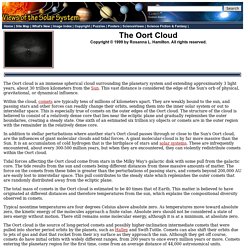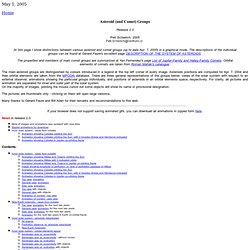

We Finally Know What Happened to Water on Mars. Nasa scientists find evidence of flowing water on Mars. Liquid water runs down canyons and crater walls over the summer months on Mars, according to researchers who say the discovery raises the chances of being home to some form of life.

The trickles leave long, dark stains on the Martian terrain that can reach hundreds of metres downhill in the warmer months, before they dry up in the autumn as surface temperatures drop. Images taken from the Mars orbit show cliffs, and the steep walls of valleys and craters, streaked with summertime flows that in the most active spots combine to form intricate fan-like patterns. Scientists are unsure where the water comes from, but it may rise up from underground ice or salty aquifers, or condense out of the thin Martian atmosphere. Why Pluto Lacks Craters, and Why That's So Freakishly Weird.
Here's What We Just Learned About Pluto. We're scientists on the NASA New Horizons team, which is at Pluto. Ask us anything about the mission & Pluto! : IAmA. Pluto Is a Geologically Active World, But We Don't Know Why. Astromike23 comments on Why does Uranus look so smooth compared to other gas giants in our solar system? The Oort Cloud: Crash Course Astronomy #22. Oort Cloud. The Oort Cloud Copyright © 1999 by Rosanna L.

Hamilton. All rights reserved. Kuiper belt. The Kuiper belt is distinct from the theoretical Oort cloud, which is a thousand times more distant and is mostly spherical.

The objects within the Kuiper belt, together with the members of the scattered disc and any potential Hills cloud or Oort cloud objects, are collectively referred to as trans-Neptunian objects (TNOs).[12] Pluto is the largest and most massive member of the Kuiper belt, and the largest and the second-most-massive known TNO, surpassed only by Eris in the scattered disc. [nb 1] Originally considered a planet, Pluto's status as part of the Kuiper belt caused it to be reclassified as a dwarf planet in 2006. It is compositionally similar to many other objects of the Kuiper belt and its orbital period is characteristic of a class of KBOs, known as "plutinos", that share the same 2:3 resonance with Neptune.
History[edit] After the discovery of Pluto in 1930, many speculated that it might not be alone. Hypotheses[edit] Discovery[edit] Name[edit] Structure[edit] Eris (dwarf planet) Eris (minor-planet designation 136199 Eris) is the most massive dwarf planet known in the Solar System, and the ninth most massive body known to directly orbit the Sun.

[d] It is estimated to be 2,326 ± 12 kilometers (1,445.3 ± 7.5 mi) in diameter,[9] and 27% more massive than Pluto, or about 0.27% of the Earth's mass.[10][17] Eris was discovered by the team of Mike Brown, Chad Trujillo, and David Rabinowitz[2] on January 5, 2005, from images taken on October 21, 2003. The discovery was announced on July 29, 2005, the same day as Makemake and two days after Haumea,[23] due in part to events that would later lead to controversy about Haumea. The search team had been systematically scanning for large outer Solar System bodies for several years, and had been involved in the discovery of several other large TNOs, including 50000 Quaoar, 90482 Orcus, and 90377 Sedna.
Enceladus's Ice Volcanoes Are Feeding Saturn's Rings. Evidence for indigenous nitrogen in sedimentary and aeolian deposits from the Curiosity rover investigations at Gale crater, Mars. Why the Length of Saturn's Day Is So Hard to Measure A Warm Seafloor On Enceladus Makes It A Prime Candidate For Life. Saturn's Moon Enceladus Has a Warm Ocean, Could Have Life. Move over, Europa.

Comets May Not Have Brought Water To Earth, After All. Titan. Space Weather. Objects in the Solar System. 10 Moons Every Person Should Know. The proper name of our satellite, in English, is The Moon.

I don't really see the problem acknowledging this. Luna is the Latin, from Roman times, tied to a moon goddess. None of us are Roman. Old English was mone.. German is Mond.. If germanic languages aren't your thing, then I acknowledge that. The Most Extreme Weather In the Solar System. “Fly me to the moon, let me play among the stars.

Let me see what spring is like on Jupiter and Mars…” Spoiler alert: the weather Earth is far nicer than on any other planet in our solar system. Sure, you might have to carry an umbrella sometimes and the bottoms of your pants get all wet, and the wind kicks around pollen which can cause pesky allergies. But then you don't have to worry about sulfuric acid falling out of the sky, which is nice. Our Solar System is home to some fairly extreme weather. An "Impenetrable Barrier" Protects The Earth From Killer Electrons. Kinja is in read-only mode.

We are working to restore service. Expand. On Jupiter, You Can See Neon Rain. Asteroid (and Comet) groups. The main asteroid groups are distinguished by colours introduced in a legend at the top left corner of every image.

Asteroids positions are computed for Apr. 7, 2004 and their orbital elements are taken from the MPCOrb database. There are three general representations of the groups below: views of the solar system with respect to an external observer, animations showing the particular groups individually, and positions of asteroids in an orbital elements space, respectively. For clarity, all pictures and animation are separated for inner and outer part of the solar system. Astronomers have spotted water plumes on dwarf planet Ceres. Jupiter’s Great Red Spot.
Want to stay on top of all the space news?

Follow @universetoday on Twitter Jupiter’s Great Red Spot(GRS) is an atmospheric storm that has been raging in Jupiter’s southern Hemisphere for at least 400 years. Many believe that Giovanni Cassini was the first to observe it in the late 1600s, but scientists doubt that it had just formed at that time. About 100 years ago, the storm covered over 40,000 km of the surface. It is currently about one half of that size and seems to be shrinking. The GRS rotates counter-clockwise(anti-cyclonic) and makes a full rotation every six Earth days. The Most Extreme Weather In the Solar System. Age of Saturn's Rings Pinned Down. SAN FRANCISCO — Saturn's iconic rings likely formed about 4.4 billion years ago, shortly after the planet itself took shape, a new study suggests.
New Hi-Res Footage Shows Saturn's Mysterious Hexagon Like Never Before. NASA has found a free particle accelerator floating in space. The Sun's Magnetic Field is about to Flip. The Sun's Magnetic Field is about to Flip August 5, 2013: Something big is about to happen on the sun. According to measurements from NASA-supported observatories, the sun's vast magnetic field is about to flip. "It looks like we're no more than 3 to 4 months away from a complete field reversal," says solar physicist Todd Hoeksema of Stanford University. Titan. Our solar system has a tail and it's shaped like a four-leaf clover.
Why is Venus' atmosphere so thick? : askscience. Scientists to Io: Your Volcanoes Are in the Wrong Place. Scientists to Io: Your Volcanoes Are in the Wrong Place Jupiter's moon Io is the most volcanically active world in the Solar System, with hundreds of volcanoes, some erupting lava fountains up to 250 miles high. However, concentrations of volcanic activity are significantly displaced from where they are expected to be based on models that predict how the moon's interior is heated, according to NASA and European Space Agency researchers. Io is caught in a tug-of-war between Jupiter's massive gravity and the smaller but precisely timed pulls from two neighboring moons that orbit further from Jupiter – Europa and Ganymede. Io orbits faster than these other moons, completing two orbits every time Europa finishes one, and four orbits for each one Ganymede makes. The Moon is Younger Than We Thought. Yep, we just smashed two spacecraft into the Moon. Not sure if this is tongue in cheek comment, but how would you propose to recycle them when they are in orbit around the moon with no fuel?
It's not like we have a service truck to go out there and do an easy pick-up like a regular washing machine. Also, the controlled crash revealed information about the crust so it was still worthwhile scientifically. It was fully tongue-and-cheek. But honestly? I'm not sure crashing stuff on the Moon and letting it lay there is a good, sustainable solution for getting rid of our junk. As it turns out, due to gravitational anomalies (remnants of old impacts under the surface, not any woo-woo with gravity), it's essentially impossible to maintain a stable, low orbit around the moon.
Well, if they were going to crash anyway, might as well control it and learn something in the process. CRAP Astronauts left on the Moon! ft. MinutePhysics - Smarter Every Day 73. 'Brighter than a full moon': The biggest star of 2013... could be Ison - the comet of the century - Science - News.